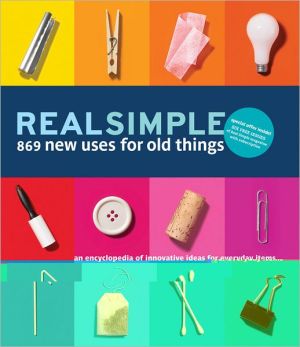Next Stop, Reloville: Life Inside America's New Rootless Professional Class
An eye-opening investigation of the growing phenomenon of "Relos," the professionals for whom relocation is a way of life\ Drive through the newest subdivisions of Atlanta, Dallas, or Denver, and you’ll notice an unusual similarity in the layout of the houses, the models of the cars, the pastimes of the stay-at-home moms. But this is not your grandparents’ suburbia, "the little houses made of ticky-tacky"—these houses go for half a million dollars and up, and no one stays longer than three or...
Search in google:
An eye-opening investigation of the growing phenomenon of "Relos," the professionals for whom relocation is a way of life Drive through the newest subdivisions of Atlanta, Dallas, or Denver, and you’ll notice an unusual similarity in the layout of the houses, the models of the cars, the pastimes of the stay-at-home moms. But this is not your grandparents’ suburbia, "the little houses made of ticky-tacky"—these houses go for half a million dollars and up, and no one stays longer than three or four years. You have entered the land of Relos, the mid-level executives for a growing number of American companies, whose livelihoods depend on their willingness to uproot their families in pursuit of professional success. Together they constitute a new social class, well-off but insecure, well traveled but insular. Peter T. Kilborn, a longtime reporter for The New York Times, takes us inside the lives of American Relos, showing how their distinctive pressures and values affect not only their own families and communities but also the country as a whole. As Relo culture becomes the norm for these workers, more and more Americans—no matter their jobs or the economy’s booms and busts—will call Relovilles "home." Publishers Weekly Journalist Kilborn expands on his 2005 New York Times profile of the "relos," rootless, upper-middle-class, mid-level executives, "an affluent, hard-striving class" who follow the money "as they migrate through the suburbs of Atlanta and Dallas and the expatriate villages of Beijing and Bombay." Kilborn explores "relovilles" like West Plano and Flower Mound, Tex., examining their curious, portable and insular culture, surveying the ad hoc "relo economy" that aids the perpetually transient relos. A skillful storyteller, Kilborn captures the costs and loneliness of the relo lifestyle without judging his subjects' choices. Kilborn began research for this book in 2005, when many large corporations responsible for relocating the relos were in such different economic circumstances; as a result, his story feels unfinished. He notes that the national free fall in housing prices has made relos less mobile and that some upper management positions have been eliminated, but fails to mention what kind of effect the economic downturn has had on his subjects' tendency toward conspicuous consumption and what will happen to the ghost towns and ghost strip malls they leave behind as they begin to curb their spending. Photos. (July)Copyright © Reed Business Information, a division of Reed Elsevier Inc. All rights reserved.
1. Mobile Homeless\ The psychology of place is essentially about belonging. Because it is a fundamental part of human psychological makeup, we know that all people need to belong. Each and every human being needs a place to call home.\ —Mindy Thompson Fullilove,\ The House of Joshua: Meditations on Family and Place\ When I met Kathy Link in August 2004, she was forty- one, still a runner and straight as a spear. She was in the blond- streaked pigtails, red sun visor, and tennis whites she wore leading a fitness class at the Forum Gym near her home in Medlock Bridge and winning a doubles match afterward.\ Kathy runs her house hold with the attention to detail of her former work editing for an aerospace company, a career that was already five years in the past. Tucked next to the seat of her white, eight- seat 2003 GMC Denali SUV was the week’s color- coded itinerary. Kaleigh, eight, is red. She is the most excitable of the girls. Deep- dimpled and gallant, she runs to open doors for adults. At soccer she is fast and ferociously focused and shimmers with sweat.\ Kelsey, the oldest at thirteen, is yellow. Tall, strong, and unflinching, she plays stopper, or center fullback. She can pound the ball half the length of the field. She got a concussion in a collision with an opponent weeks before. To keep playing she must wear a thick- cushioned headband for six months.\ Kristina, eleven, is dark green. She can be distant and inscrutable. Left-footed, playing both right and left forward, her mission in life is outperforming and outgrowing Kelsey. She made a cheerleading squad. Pleased with herself, she said, “Kelsey tried out twice and didn’t make it.” But Kelsey has figured her out. In a charity road race, she sensed Kristina coming up behind, let her get close, and took off.\ With school over that afternoon, Kathy (blue for work, light green for family and volunteering) had already dropped Kaleigh at her practice field blocks from home. She had to take Katrina to her practice four miles north and Kelsey to hers fourteen miles south. Her husband, Jim (orange), couldn’t help much. Two to five days a week, every week, he’s on the road seeing clients. For Monday and Tuesday, the itinerary said, “Jim in meetings, Charlotte.” For Wednesday, it said, “Jim in meetings, Philadelphia.”\ Kathy surveyed the clotted intersection at the mouth of her 636house subdivision. After moving to Medlock Bridge four years ago and choking on traffic, she made a rule: “Wherever I’m going has to be within one mile of the house.” But she breaks the rule two or three times a day, all days but Sunday, with ten- and fifteen- mile trips. She does most of her mothering not at home but from the sidelines of soccer games and from her roost in the big Denali. She passes out snacks, water, Kleenex, Band-Aids, and medication, takes soundings of the girls’ spirits and school day, and talks through homework assignments.\ Impatiently, she squeezed the wheel. “Go, people,” she pleaded. Her knuckles went white. Twice she tapped the horn. A timid driver in a gray van three cars ahead tiptoed into the Atlanta- bound avalanche along Medlock Bridge Road. Kathy pulled abreast, saying, “I have to see who she is.” A rookie Relo, she decided, someone new to north Fulton County’s chronically clogged traffic.\ Kathy herself is a veteran Relo. She had already moved three times inthe past ten years to help keep Jim’s career selling pension and employee-benefit management ser vices on track.\ As Relos, the Links are corporate relocatees, or career transferees. Employers like Microsoft, Intel, and Apple; Procter & Gamble and General Electric; PepsiCo and Coca- Cola; UPS and FedEx; and Citigroup and JPMorgan Chase move them every few years to fly the corporate flag and work in far-flung factories and offices in the United States and abroad.\ Americans working for American companies and Americans and foreigners working for one another’s companies, Relos are twenty- first-century heirs of William S. Whyte’s Or ga ni za tion Man, who exchanged the promise of job security and a pension for his loyalty and toil. Relos exchange not so much their loyalty and toil as their friends, their family ties, and the comforts of a hometown for bigger money and a bigger job—or to hold on to a job. Like Sloan Wilson’s Tom Rath of The Man in the Gray Flannel Suit, they run on a corporate leash and sell out, too, but to the road.\ Relos tend to be economically homogenous, with mid- career incomes of $100,000 to $200,000 a year. They differentiate themselves by their kids’ activities and by the disposable tokens of their success— the leased car and the home du jour. Most go to state universities, disproportionately to schools of the Great Plains and the Midwest, where good jobs can be scarce, and many go on to graduate school. They vote two-to-one Republican (although in the 2008 presidential election, their votes for Barack Obama narrowed the gap). Most are Presbyterian, Methodist, Lutheran, or nondenominational Protestant. The vast majority of Relo breadwinners are white men aged thirty to fifty. In many Relovilles, unlike the nation as a whole, Asians tend to outnumber African Americans and Hispanics.\ Some Relos find their salaries, toys, and perks compensating— the schools with top SAT scores, tennis and golf clubs, parks for youth sports, and upscale shopping strips. But they often complain of stress and anomie. They trade a home in one place for a job that could be anyplace. Perched in their Relovilles, they have little in the way of community ties or big, older city amenities like mass transit, museums, zoos, professional sports stadiums, and live theater.\ Outside the gates of their subdivisions, in the towns beyond, Relos are ghosts. They support their own subdivisions’ causes like runs to cure breast cancer or lupus, or fund drives to buy computers for their kids’ schools and gear for their teams. But with the father on the road most weekdays and another move always looming, Relos have neither the time nor the need to sit on town boards or run in local elections, or join the church vestry or the Rotary Club.\ Mayors and chambers of commerce complain that Relos shun campaigns to build a museum, a theater, a stadium, or a homeless shelter. They know they will be gone before the cement is poured. A Relo breadwinner’s community is the company and his professional associations. Relos build networks of contacts and colleagues across the Internet and see them at conferences and conventions, when they find a few hours for a round of golf. They can tell you the way to the airport but not to City Hall.\ On the face of it, Relo families seem no more or less striving or stressed or self- satisfied or absorbed in their kids, kitchens, and lawns than many middle- class Americans. They patronize the same ubiquitous chain stores, restaurants, and fitness centers. But on a drive through Alpharetta’s subdivisions, Bradd Shore, an anthropologist at Emory University in Atlanta, made a novel observation: “The American family lasts only a generation and a half.” He said families tend to keep up their rituals and sentimental connections after the children move out and begin having children. But when the second generation of children starts leaving, the original family disintegrates unless it makes great efforts to preserve itself. The disintegration, Shore said, is most pronounced among families who abandon their generational moorings— that is, Relos.\ Yet in another way, Relos are cultural echoes of the 1950s’ Andersons of Father Knows Best and the Ozzie & Harriet Nelsons. Relo spouses, more than 70 percent of them wives, drop promising careers to advance their spouses’ careers and settle for temporary jobs, volunteer work, and stay- at- home mothering. Without grandparents and cousins and old friends nearby and bounding off like tumbleweed from town to town, Relos have also resurrected a relic of the American frontier— the tight nuclear nest of mother, father, and kids.\ Relo children, growing up rootless, have little choice but to hit the job market running themselves. Gone from their parents, they beget an el der ly variation of Relos. To reweave generational ties, they invite parents to come along on their moves. North Atlanta’s latest trend in suburban housing is the stair- free, low- maintenance, “active adult” subdivision, which is cropping up near the developments oriented to young families. For these “collateral” Relos, the moves can be a mixed blessing. When their children are moved again, they can leave their parents, by then too old to move, stranded in a town where they only had ties to their children.\ In 1994, when the Links moved from Houston to Baltimore for Jim’s job at T. Rowe Price, they rented a house in Severna Park, Mary land, an established riverside suburb where, by happenstance, Kathy’s parents had moved from Dallas so her pilot father could take a new job. Jim and Kathy found the town haughty and indifferent to newcomers with small children. They had Kaleigh there, and Kelsey started school. In three years, in 1997, a headhunter recruited Jim to a financial services company in Rochester, New York.\ They bought a house in Pittsford, an affluent, apple- pie town with a congenial mix of transient and long- settled families. Kathy dug in to stay. “Up there each town has its own little village and one main street where you can walk and ride your bike and get someplace safely,” she said. She became a certified personal trainer and began volunteering. She joined the Junior League. Kristina started school, and she and Kelsey started soccer.\ But after three years, Jim was discouraged with his job and faced a dilemma common among Relos. For a well- paid, skilled, and specialized financial ser vices sales manager, there was no other similar work in Rochester. He would have to start over in another business or relocate. In 2000, the First Union Corporation of Charlotte, a bank, took him on and sent him to its office in Atlanta. A year later First Union and Wachovia Corporation, another big bank in Charlotte, merged, and Jim stayed on.\ Inching along, Kathy passed strip malls. She went by the gym, chiropractors, nail shops, colonnaded stucco banks, hair salons, sixteen- pump gas stations, self- storage lots filled with the possessions of coming- and- going Relos, Waffle Houses, a tanning place, and a salon that tattoos on lipstick and eyeliner so they will not fade in the pool. She dodged the orange barrelsof road- widening crews spreading asphalt to try to keep up with a north Fulton County population that in the 1990s swelled from 170,000 to 273,000. Sidewalks started and stopped. Only a fool walked a dog or rode a bicycle there.\ She passed new subdivisions with signs in wedding invitation script trumpeting price points, or ranges, which developers use to stratify neighborhoods. The signs read Longlake, $200’s; Wolf Creek, $300’s to $500’s; Inverness, $600’s to $800’s. They tell families where they fit. She passed four alert cement lions, prone on their paws, guarding a semicircular driveway. “Lions, Mommy?” Kelsey asked. “Why do they have lions?”\ She passed a development called Ellard with closely packed houses mimicking the bluestocking quarters of Savannah and Charleston. “A Turn- of- the- Century Community,” the sign at Ellard’s gate said, “Est. 1998.” She crossed over Georgia 400, the sclerotic artery from Appalachia to Atlanta that pumps hundreds of thousands of commuters into Alpharetta’s glass and brushed- metal office parks.\ After dropping off Kelsey and Kristina, Kathy would double back and pick up Kaleigh and take her to golf. She would wait for Kelsey to finish soccer before picking up Kristina and taking her to cheerleading practice. Another mother would retrieve Kristina so that Kathy could be home when Kaleigh’s math tutor came.\ When the Links began house hunting around Atlanta in 2000, the girls were ten, eight, and five. “School was number one,” Jim said. Without connections in their new towns— to the doctor who might steer a friend’s child to medical school, the union steward who could sign her up for a job in the factory, the café own er who could take her on for the summer— Relos can’t give their kids much of a boost into college and careers. They rely on the schools.\ Once settled on the top school districts, the Links looked for homes within subdivision price points. At their $300,000 range, they wanted four bedrooms, two and a half baths, a basement, and a backyard. Easy drives from Jim’s office in Atlanta they found only small 1970s ranch houses that they could afford. But twenty- five miles north of the city, they came upon Alpharetta. In the Medlock Bridge subdivision, theyfound a five- bedroom, four- bath home with a secluded backyard for $313,000.\ Alpharetta was a departure from the Rochester suburb of Pittsford and Severna Park, outside Baltimore. The trees were sticks, the yards coiffured. Beyond Kaleigh’s Medlock Bridge Elementary School, a Montessori school, and the Medlock Bridge community center, with its club house, tennis courts, soccer fields, and pool, nothing, no stores or churches or parks, was within a safe walking distance. But at least everyone seemed from somewhere else and predisposed to mix— a good thing, the Links thought, compared with Severna Park. Of the thirty thousand people living in their Medlock Bridge–Alpharetta Census tract, 75 percent were born outside Georgia.\ In other ways, too, the tract had the complexion of Relovilles. Less than 3 percent of the people were over sixty- five, compared with a national average of 12 percent. Less than 2 percent were poor or unemployed. Two- thirds of the adults had four or more years of college, two and a half times the national average. Families earned just over $100,000 a year, twice the average. The typical home was worth $400,000, also twice the national average, and with nine or more rooms was twice as big. Steve Beecham, the leading local home mortgage broker, explained, “Everybody here is in the top ten percent of what they do, or they desire to be in the top ten percent.”\ Excerpted from Next Stop, Reloville by Peter Kilborn.\ Copyright © 2009 by Peter Kilborn.\ Published in July 2009 by Times Books.\ All rights reserved. This work is protected under copyright laws and reproduction is strictly prohibited. Permission to reproduce the material in any manner or medium must be secured from the Publisher.
\ Publishers WeeklyJournalist Kilborn expands on his 2005 New York Times profile of the "relos," rootless, upper-middle-class, mid-level executives, "an affluent, hard-striving class" who follow the money "as they migrate through the suburbs of Atlanta and Dallas and the expatriate villages of Beijing and Bombay." Kilborn explores "relovilles" like West Plano and Flower Mound, Tex., examining their curious, portable and insular culture, surveying the ad hoc "relo economy" that aids the perpetually transient relos. A skillful storyteller, Kilborn captures the costs and loneliness of the relo lifestyle without judging his subjects' choices. Kilborn began research for this book in 2005, when many large corporations responsible for relocating the relos were in such different economic circumstances; as a result, his story feels unfinished. He notes that the national free fall in housing prices has made relos less mobile and that some upper management positions have been eliminated, but fails to mention what kind of effect the economic downturn has had on his subjects' tendency toward conspicuous consumption and what will happen to the ghost towns and ghost strip malls they leave behind as they begin to curb their spending. Photos. (July)\ Copyright © Reed Business Information, a division of Reed Elsevier Inc. All rights reserved.\ \ \ \ \ Library JournalKilborn offers an analysis of the lives of "relos"—individuals who move up in their careers by moving around, both within the United States and internationally. The author is a longtime correspondent for the New York Times and it shows; the book reads quickly but is still thought-provoking, and moves logically from an extended example of a relo family, through chapters on the cities where relos settle (including Alpharetta, GA, and Plano, TX); the companies for which they work; the communities they form (or don't); the houses they buy and sell; and the impact of their moving around upon their family life. Kilborn's tone is largely reportorial; he opts to focus mainly on the economic and professional repercussions of rootlessness rather than on its social impact (an earlier book to which he contributed, Class Matters, included a bit more editorializing). VERDICT This book might have benefited from a more synthesizing conclusion, but overall it is a solid, business-centric read that will appeal to fans of Richard Florida's Who's Your City? or Bill Bishop's The Big Sort. Recommended for interested general readers and business students.—Sarah Statz Cords, The Reader's Advisor Online\ \ \ Kirkus ReviewsFormer New York Times reporter Kilborn examines the nomadic lifestyles of the estimated ten million American professionals "who were moved in the last year or two and will be moved again soon."The number of these "Relos" has boomed since the 1970s with the growth of the U.S. economy and foreign trade, giving rise to suburban communities across the country (Relovilles) where most residents are white, affluent and continually on-the-go. The author tells much of his story through portraits of nearly 20 Relo couples who create an "insular, portable, and parallel culture" as they move through the suburbs of Atlanta, Denver, Dallas and even Bombay and Beijing. Often starting out as top graduates at public universities in the Great Plains and Midwest, where job opportunities are limited, Relos transfer every few years within and across companies to get ahead. They often forego close ties to family, friends and the comforts of hometowns in exchange for higher salaries, growing home equity and a chance to enter senior management. "You cannot get to the top level of organizations without relocating," says a graduate of Purdue University, which produces many Relo engineers and CEOs. Although Kilborn's detailing of the ambitions, new homes and job situations of Relos can prove tedious at times-since most of the stories are alike-the author clearly evokes the rootlessness of their lives, with fathers often on the road; mothers at a loss without intimate female friends and struggling to integrate themselves and their children into new communities; and everyone anxious about when the next transfer will come. A solid update on the American rat race.\ \








